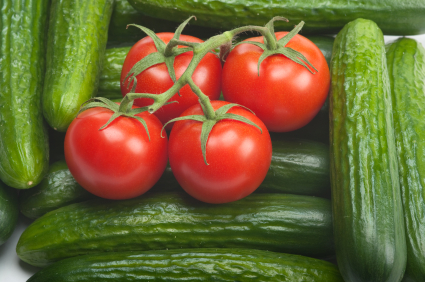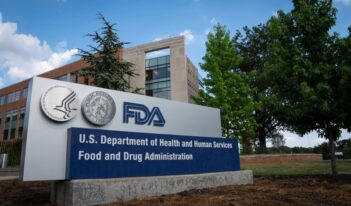
A rare strain of E. coli raises tensions and questions over the EU response.
More than ten days have passed since Germany reported a significant increase in the number of patients with hemolytic uremic syndrome (HUS), a disease generally associated with gastrointestinal infections caused by E. coli bacteria. The contamination source has yet to be identified, but this outbreak of a rare strain of the bacterium E.coli O104:H4 has already proven to be the deadliest in history.
The difficulty in tracing the source of contamination stems in part from the scientific challenges inherent in a little known bacterium, but it also stems in part from the complexity of the food production process, including greater volumes of products and longer supply chains. Significantly, this latest and ongoing crisis raises serious questions about the European Union (EU) food safety regime.
German authorities initially suspected organic cucumbers from Spain were to blame, a view quickly endorsed by the EU Commission last Friday via the Rapid Alert System for Food and Feed (RASFF). Yet that suspicion has not been confirmed. The sampled cucumbers did test positive for E. coli, but they did not show the presence of the specific serotype responsible for the widespread outbreak.
The “cucumber crisis,” fueled by the media, has triggered a furious row across Europe, with several EU countries banning produce imports from Spain, Russia banning imports of all fresh produce from EU countries, and Spain threatening legal action against German authorities for wrongly blaming its vegetables for the crisis.
Spanish fruit and vegetable exporters estimate they have lost more than 200 million euros a week as 150,000 tons of produce go unsold in a Europe-wide reaction to the crisis. Spanish Prime Minister José Luis Rodrigo Zapatero called for compensation for damages incurred, and criticized not only the German authorities for wrongly pinpointing the source of the outbreak, but also the European Commission for being slow to act.
These calls seem to have some merit especially when examined in light of the enduring bans several member states have imposed on Spanish fresh produce in response to the crisis. These restrictive measures clearly appear disproportionate today in light of the finding that the Spanish cucumbers carried a different strain of E. coli – and they call for action by the EU Commission as a guardian of the European Treaty.
EU Agriculture Commissioner, Dacian Ciolos, currently is preparing, after having obtained approval from German Prime Minister Angela Merkel, a financial package aimed at compensating Spanish farmers. Should this pass, the EU taxpayers will pay the bill for the German mistake, all in the name of “solidarity” among European countries.
Clearly the EU food safety regime is under a “stress test.” That regime, or set of rules, is based on a shared competence between the Union and its Member states, as is often the case in the EU legal order. As is well known, the discipline governing EU food safety finds its origin in the food and related public health scares that overtook Europe in the 1990s, such as mad-cow disease, dioxin contamination, and polluted drinking water. Only in the light of this historical background should one analyze the ongoing crisis to assess whether and how the EU could have handled the current crisis differently.
Would it have been possible for the EU to step in and contain the adverse effects of the ongoing outbreak? This question is central to any effort to understand the regulatory implications of the current crisis.
In the absence of central EU regulatory action, EU Member States are free to decide what actions to take against food safety outbreaks. It is within this space of national regulatory autonomy that the German authorities and those of other countries have been acting during the last few days.
However, the EU General Food Regulation (GFR) does allow the EU Commission to assume special powers in emergency situations. In particular, Article 53 confers on the EU Commission the authority to introduce emergency food measures. However, it subjects the adoption of those measures to the satisfaction of two conditions. First, the EU Commission only can act when “food . . . originating in the Community or imported from a third country is likely to constitute a serious risk to human health.” Second, “that such risk cannot be contained satisfactorily by means of measures taken by the Member State(s) concerned.”
The absence of EU regulatory action suggests that the Commission has not as of this time considered Article 53’s conditions satisfied. This is likely due to the actual scientific difficulty in pinpointing the source of the outbreak and identifying the food items that should be suspended from the market.
Nevertheless, another provision of the GFR, Article 56, expressly provides for the possibility of “set[ting] up a crisis unit immediately” in “a situation involving a serious direct or indirect risk to human health deriving from food . . . and the risk cannot adequately be managed solely by way of the application of [Article] 53.”
Although Article 56 has – at least to my knowledge – never been relied upon, it might have offered a solid legal basis for an EU-wide response. It might have provided the Commission not only with the authority to immediately engage the European Food Safety Authority (EFSA) to conduct a risk assessment, but also to secure for the Commission the task of assessing and communicating ongoing risks.
Under the sole authority of EFSA, a crisis unit would have been able to centralize the risk assessments carried out in several laboratories across the EU and, more importantly, to convey to the public a more balanced and cautious message about the possible sources of the outbreak. The risk communication capabilities of EFSA and the Commission, supported by the latest risk perception and communication studies, are more sophisticated than those available at the national level. Moreover, should the crisis unit have run into the same mistake as the German authorities have made in risk assessment or communication, the consequences from its actions would have been less prone to politicization and would have been less likely to contribute to protectionist fears and impulses.
Instead, the EU Commission has limited itself to ensuring the rapid distribution of information throughout the EU on findings on possible food sources and distribution of human cases via the RASFF and the Early Warning and Response System (EWRS). It clearly believed – and still seems to believe – that the risk involved can be “contained satisfactorily by means of measures taken by the Member State(s) concerned.”
Whether this is a sensible approach to the exercise of its powers will be determined in the near future, once the source of this outbreak is eventually pinned down. In the meantime, exaggerated fears of an E. coli epidemic in northern Germany are threatening the livelihoods of farmers across all Europe and clearly putting the EU food safety regime under its most substantial stress test yet.




